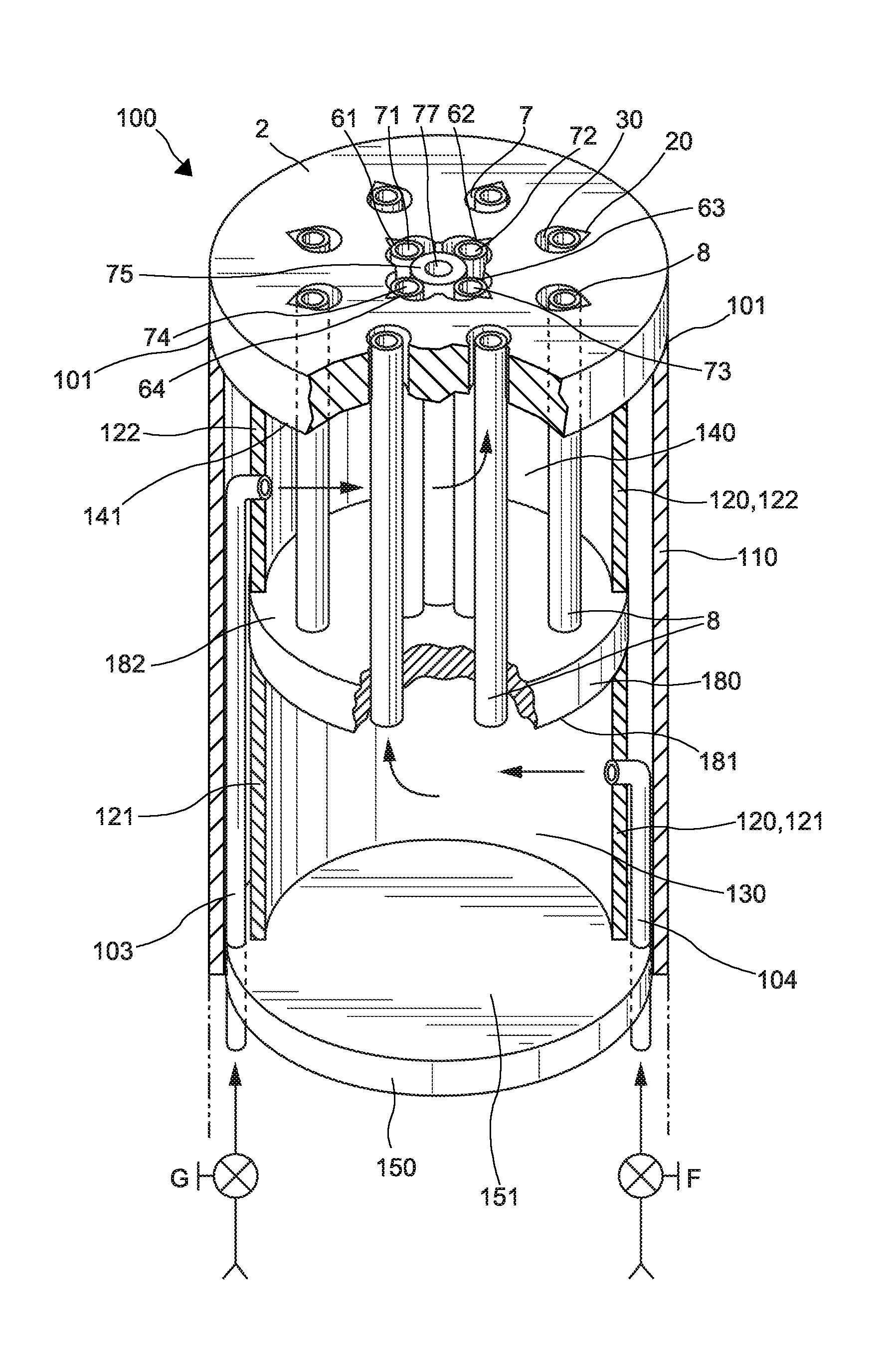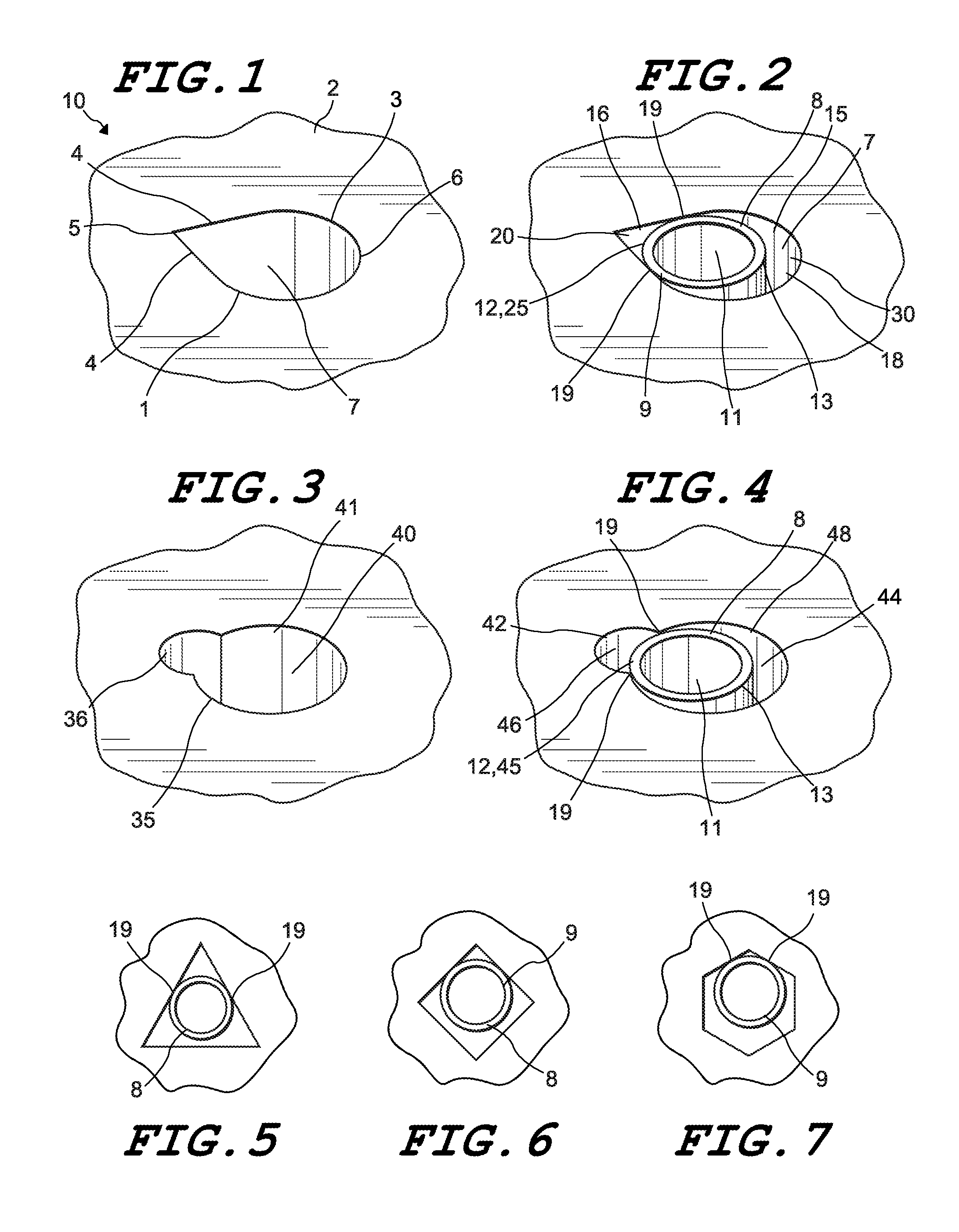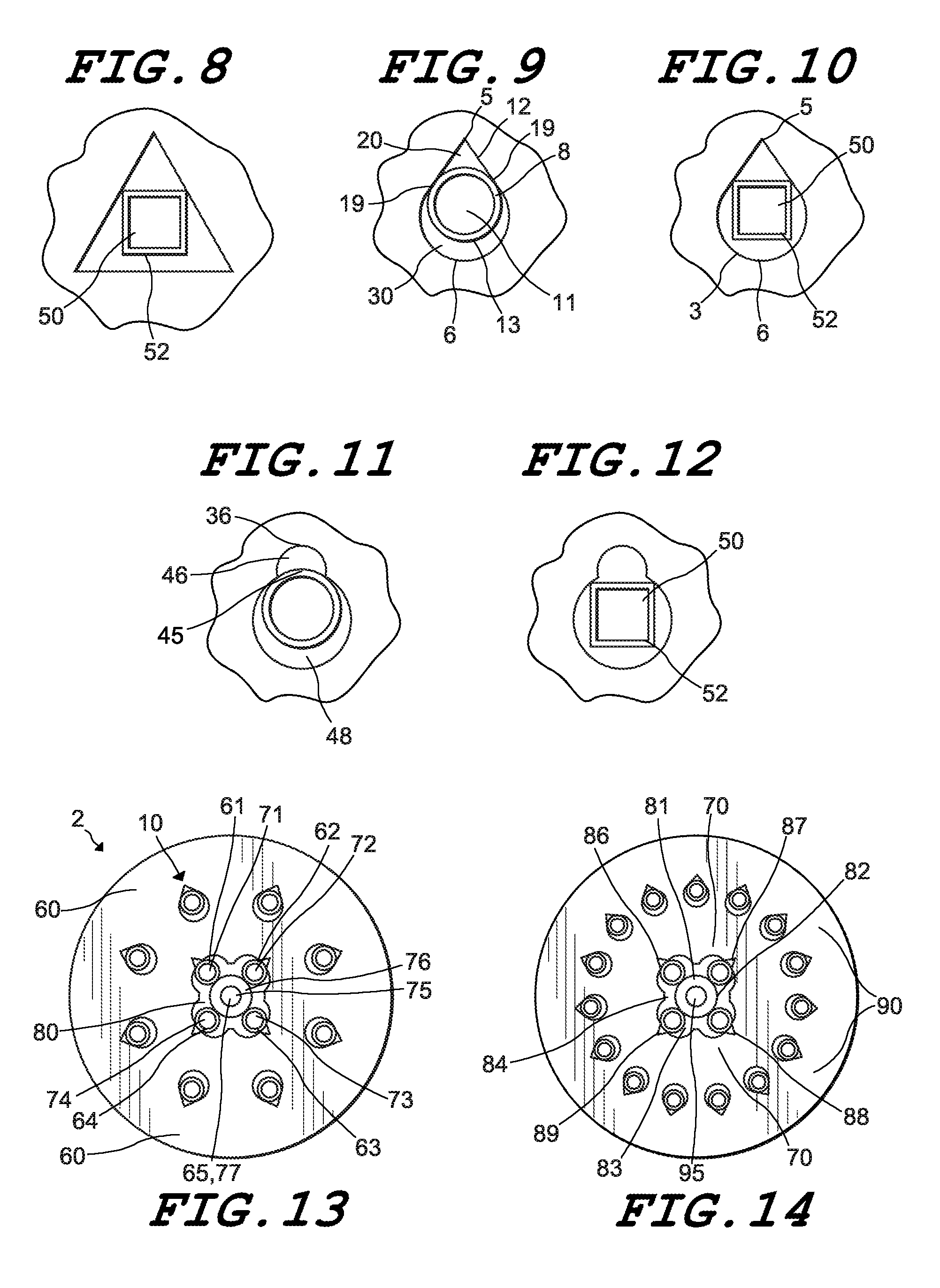Laminar Flow Jets
a jet and flow technology, applied in the field of laminar flow jets, can solve the problems of unsuitable glass working flames, more complicated tubing, conduits, chamber structures of burners, etc., and achieve the effects of reducing unburned gases, efficient flames, and high quality
- Summary
- Abstract
- Description
- Claims
- Application Information
AI Technical Summary
Benefits of technology
Problems solved by technology
Method used
Image
Examples
embodiment 300
[0079]FIG. 18 shows an alternate embodiment 300 in which a series of tubes abut the bottom surface of faceplate 2, as opposed to extending through faceplate openings and terminating flush with the top surface of faceplate 2 as previously disclosed. This embodiment 300 may be employed alone as shown in FIG. 18, or in a series as depicted in FIG. 19. The faceplate 2 is broken into sections, each section having specifically shaped openings to allow the passage of gas from the tube, through the conduits of the faceplate, and up to the surface.
[0080]This particular embodiment depicts a faceplate 2 broken into three pieces 301, 302, and 303. These faceplate pieces act as inserts that are placed on top of the exposed tubes and conduits. First faceplate piece 301 is the outer donut shaped ring that conceals a portion of the outer tubes 320 such that only an opening 325, generally shaped as a half-moon, is exposed to the surface. In this embodiment, first faceplate piece 301 covers a portion...
second embodiment
[0089]Another embodiment of the invention is shown in FIG. 24 which provides a dual flow burner head 230 constructed from inter-fitting square tubes 233 positioned within an array of drilled holes 235 in the faceplate 232. This construction is more economical than the previous embodiment. As shown here in FIG. 24 and depicted in FIG. 26b, the diagonal dimension of the square tube is approximately equal to the inside diameter of the faceplate hole. This provides an interference fit, or nesting, of the square tubes 233 within the faceplate holes 235 and provides an accurate coaxial alignment of the two fluid conduits formed by this arrangement. Namely, a first conduit is defined by the space within the faceplate hole 235 but around the periphery of the square tube 233, and a second conduit is the square tube itself. FIG. 25 depicts the alignment and placement of the tubes and the fitting of the tubes 233 within the faceplate holes 235 after the holes have been drilled. This constructi...
PUM
 Login to View More
Login to View More Abstract
Description
Claims
Application Information
 Login to View More
Login to View More - R&D
- Intellectual Property
- Life Sciences
- Materials
- Tech Scout
- Unparalleled Data Quality
- Higher Quality Content
- 60% Fewer Hallucinations
Browse by: Latest US Patents, China's latest patents, Technical Efficacy Thesaurus, Application Domain, Technology Topic, Popular Technical Reports.
© 2025 PatSnap. All rights reserved.Legal|Privacy policy|Modern Slavery Act Transparency Statement|Sitemap|About US| Contact US: help@patsnap.com



